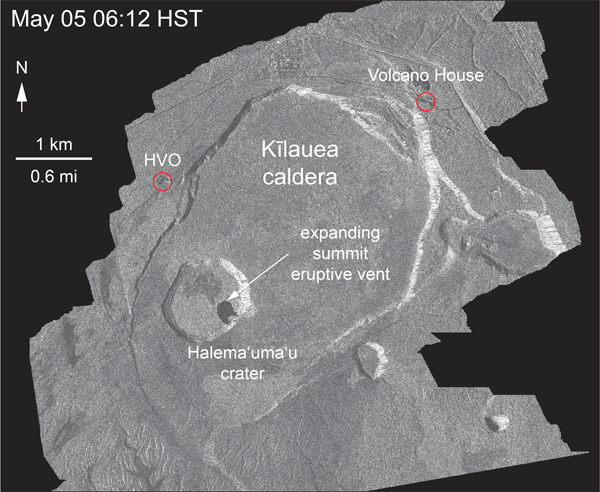
Lava fountains rise and fall, but the river they feed remains the same: a vigorously-flowing channel down to a wide ocean entry, with occasional small overflows slopping over the levees (banks). Last night, Fissure 8’s fountains were reaching 200 feet; today they dropped again to 100-130 feet with bursts up to 180. Its cinder cone, built of spatter and tephra falling around the fountains, is now 170 feet tall.
When is somebody going to name this pu’u?

Frequency of earthquakes ramped up Thursday night, with more M3s than before. Today’s M5.3 summit explosion was late, finally popping at 11:56am, sending up an ash-poor (?) cloud 10,000 feet. HVO: “It didn’t produce a distinct plume, which is why we say ‘ash and gases’ instead.” This cycle of daily explosive events has been going on since May 26 or 29, depending on how rigidly one defines the pattern.
#LeilaniEstatesEruption #KilaueaVolcano UPDATE: Any guesses on how quickly this river of lava is racing?! Amazing video of what #Fissure8 is producing taken today by Ken Boyer inside #LeilaniEstates. This footage hasn’t been altered https://t.co/Jl7UJEjVSX @HawaiiNewsNow #HINews pic.twitter.com/NPrMRawB1y
— Mileka Lincoln (@MilekaLincoln) June 16, 2018
All right, let’s get to the science. And a rather foggy but nevertheless genuine video clip of one of Halema’uma’u’s daily explosions.
Continue reading June 15: Summit Explosion Captured on Livestream








